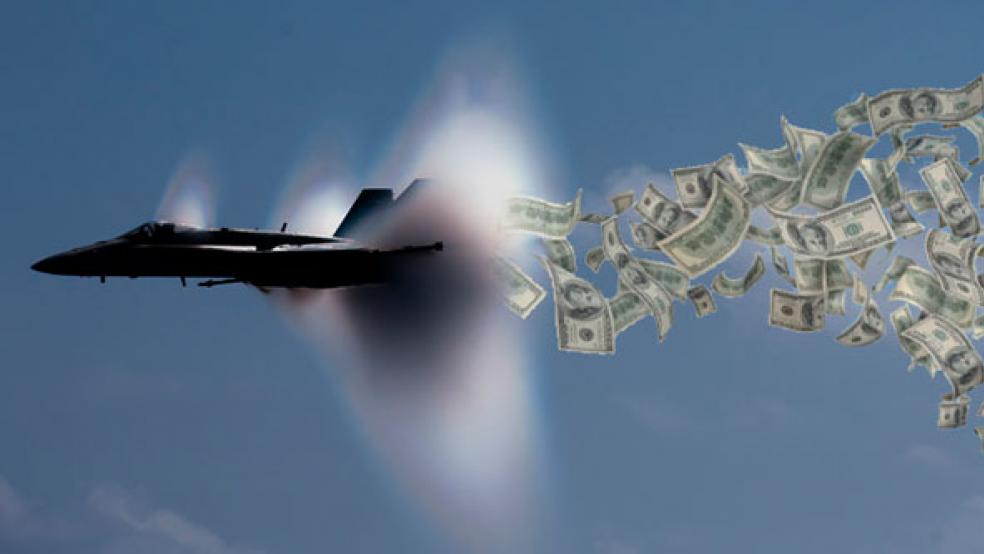A story in The New York Times over the weekend raised the possibility of a new arms race in the Middle East, as increased sectarian fighting and proxy wars in Yemen, Syria, and Iraq create new demand for advanced weapons and weapon systems.
The article pointed out, as others have, that the primary beneficiaries of the increased demand for planes, missile, tanks, and other military hardware will be U.S. military contractors – the Lockheed-Martins, General Atomics, and Boeings of the world. But the expected increase in orders from Middle Eastern countries looking to control jihadist groups like ISIS, and rebel groups such as Yemen’s Houthi tribe, will be more of an extension of a gravy train that’s already rolling than some sort of new start.
Related: How ISIS Regained Its Momentum in Iraq
Just how well have U.S. defense firms done in the past few years? To put it in context, in the past 24 months, the U.S. stock market has been on a nearly unprecedented tear. Since April of 2013, the Standard & Poor’s 500 index has soared, increasing in value by more than 30 percent.
Compared to a broad index of the defense industry, the S&P 500 looks like a bad investment. Since April of 2013, the Dow Jones U.S. Aerospace and Defense Total Stock Market Index has grown at double the rate of the S&P, increasing in value by 60 percent.
Making the performance of defense firms even more remarkable is the fact that their share prices continued to surge even as the U.S. Budget sequester took hold, slashing the Pentagon’s budget by tens of billions of dollars. In 2014, for example, U.S. military spending fell by 6.5 percent, according to the Stockholm International Peace Research Institute.
The reason for defense firms’ continued success, according to a report issued this month by SIPRI, is that the U.S. has been the outlier in that respect recently. “Excluding the USA, total military expenditure for the ‘rest of the world’ has increased continuously since 1998 and was up by 3.1 per cent in 2014,” the report concluded.
Related: Corker: Obama Is too Eager to Sign Iran Nuke Deal
In the Middle East in particular, defense spending has continued at a strong pace, with several countries in the region dedicating more than 5 percent of their GDP to defense spending, while Oman and Saudi Arabia both spend more than 10 percent of GDP on national security.
A huge share of that money goes toward buying sophisticated weaponry from developed countries, particularly U.S. firms, when it comes to countries allied with the U.S. policy toward jihadist and terrorist groups.
As ISIS continues to pillage Iraq and Syria, and the Houthis rage across Yemen, it seems the arms business will be a profitable one for the foreseeable future.
Top Reads from The Fiscal Times:





